Knot Experienced
DESIGN ROLE
Facilitator/Researcher
Brand Experience
Art Direction
Packaging Design
Screenprinting
Facilitator/Researcher
Brand Experience
Art Direction
Packaging Design
Screenprinting
Course: Capstone Project, Supervising Instructors: Jon Hannan, Christopher Hethrington
Over eight months, Knot Experienced materialized through iterations of workshops and crafting kits as part of my capstone project theme: DIY and hobby craft. An embroidery kit designed to empower anyone wanting to feel confident embroidering, this kit provides all the necessary tools, instructions and answers, barrier-free and without jargon, for people with little to no familiarity with sewing and needlework.
Through this project, Hayley was recognized by the ECU Design Faculty for her efforts in ‘Community and Participatory Design’ amongst her graduating peers at Emily Carr’s 2023 graduate exhibition, “The Show.”
Over eight months, Knot Experienced materialized through iterations of workshops and crafting kits as part of my capstone project theme: DIY and hobby craft. An embroidery kit designed to empower anyone wanting to feel confident embroidering, this kit provides all the necessary tools, instructions and answers, barrier-free and without jargon, for people with little to no familiarity with sewing and needlework.
Through this project, Hayley was recognized by the ECU Design Faculty for her efforts in ‘Community and Participatory Design’ amongst her graduating peers at Emily Carr’s 2023 graduate exhibition, “The Show.”
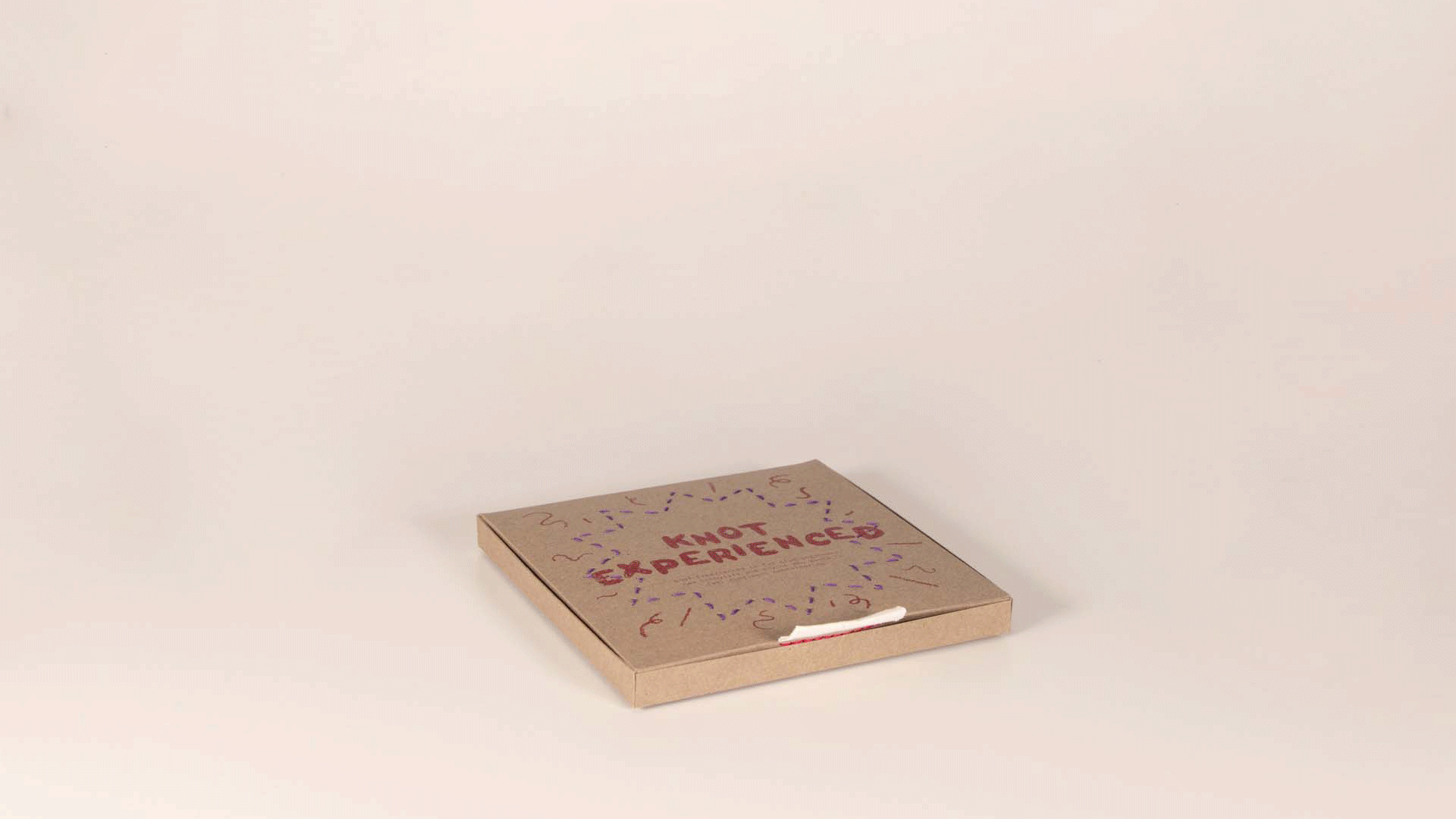
Opportunity Space
I first saw the opportunity to share my hobby craft and DIY knowledge and skills with others in the fall of 2022. So, I planned and hosted a crochet workshop for beginners to start my research. Hosting that workshop unravelled my initial exploration and made me question what I wanted to say and share. In narrowing the scope of my research and explorations, I decided to try making hobby craft kits as a different medium for teaching crafts.

A venn diagram and mind map that helped me visualize how I could move forward with what I was already creating.
Bridging the Gap
I wanted to create a similar experience to my workshops where people would immediately have the answers to their questions and be able to see in-depth demonstrations of the necessary techniques. While working on kit instructions, I realized that crochet is not a low-barrier craft, requiring much more patience and even hand dexterity for a complete beginner. My research into different crafts led me to embroidery as an accessible craft to bridge the gap for beginners interested in learning, so I trialled an embroidery kit.

The first iteration of the embroidery kit: a cloth bag to be embroidered on.
New Perspectives
At the end of all the prototyping and kit testing, the feedback from testers had one underlying theme: there were lots of subtle cues that my testers struggled to get ahold of. “How do I make sure the thread doesn’t go through my fabric?” “Why is the thread on the back of my fabric getting all tangled?”
It was these technical nuances that people struggled with, more so than the actual embroidery technique. That perspective from a person who had no prior understanding of anything like embroidery helped me to see the needs of someone starting in embroidery are not only in technique but also in setting up their tools and materials.
It was these technical nuances that people struggled with, more so than the actual embroidery technique. That perspective from a person who had no prior understanding of anything like embroidery helped me to see the needs of someone starting in embroidery are not only in technique but also in setting up their tools and materials.
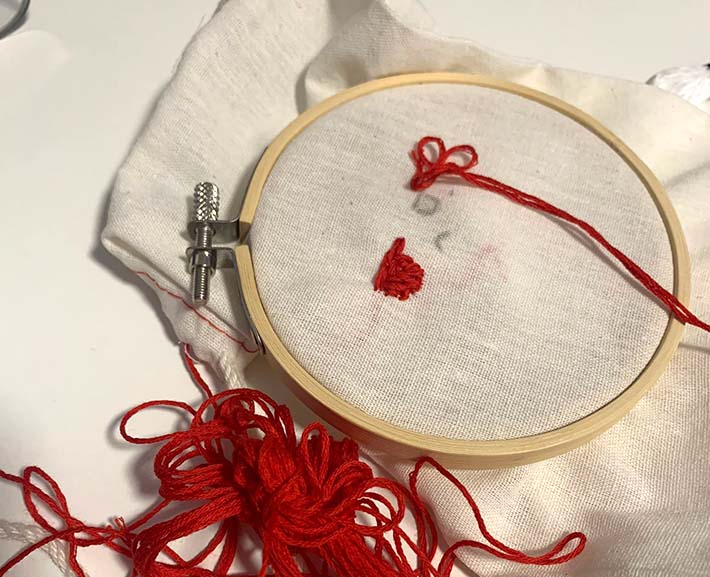

Left: A tester’s thread getting tangled in the process of embroidering (photo courtesy: Clara Ngie)
Right: Another tester trying the first iteration of screen-printed guides (photo courtesy: Rachel Leong)
Tying Loose Ends
With the embroidery kit making good progress in its instructional content, the last bit of instructions relied heavily on the practical aspect of the kit. I ensured that my written directions were clear and left the user feeling empowered to start embroidering, so I wanted the fabric exercises to reflect that. Based on the developing star logomark, I designed three fabric exercises that would walk the user through basic how-tos and eventually give them the autonomy to embroider their ideas.

A user navigating the kit and starting with the first fabric exercise that has the stitches labelled in order of how they are to be done.
Brand Experience
To stay true to the handmade feeling of the test kits, I sifted through different fabrics, cardstocks and papers that would visually work well with the kit and work with the risograph and screenprinting methods I was employing. The textures and patterns of my substrates inspired me to include more hand-drawn elements in my packaging and fabric exercises. The star logomark, in particular, suited this textured feeling and became less of a logomark and more of a way to communicate excellence and achievement within my kit.


Left: A type sample with the hand drawn letters on the paper used in the project. Right: Substrate samples.

The kit and all its parts. From left to right: the instructions booklet (with a belly band containing sample stitches), the embroidery hoop secured in the box, the fabric exercises, a needle in a paper folder and threads of different thicknesses.
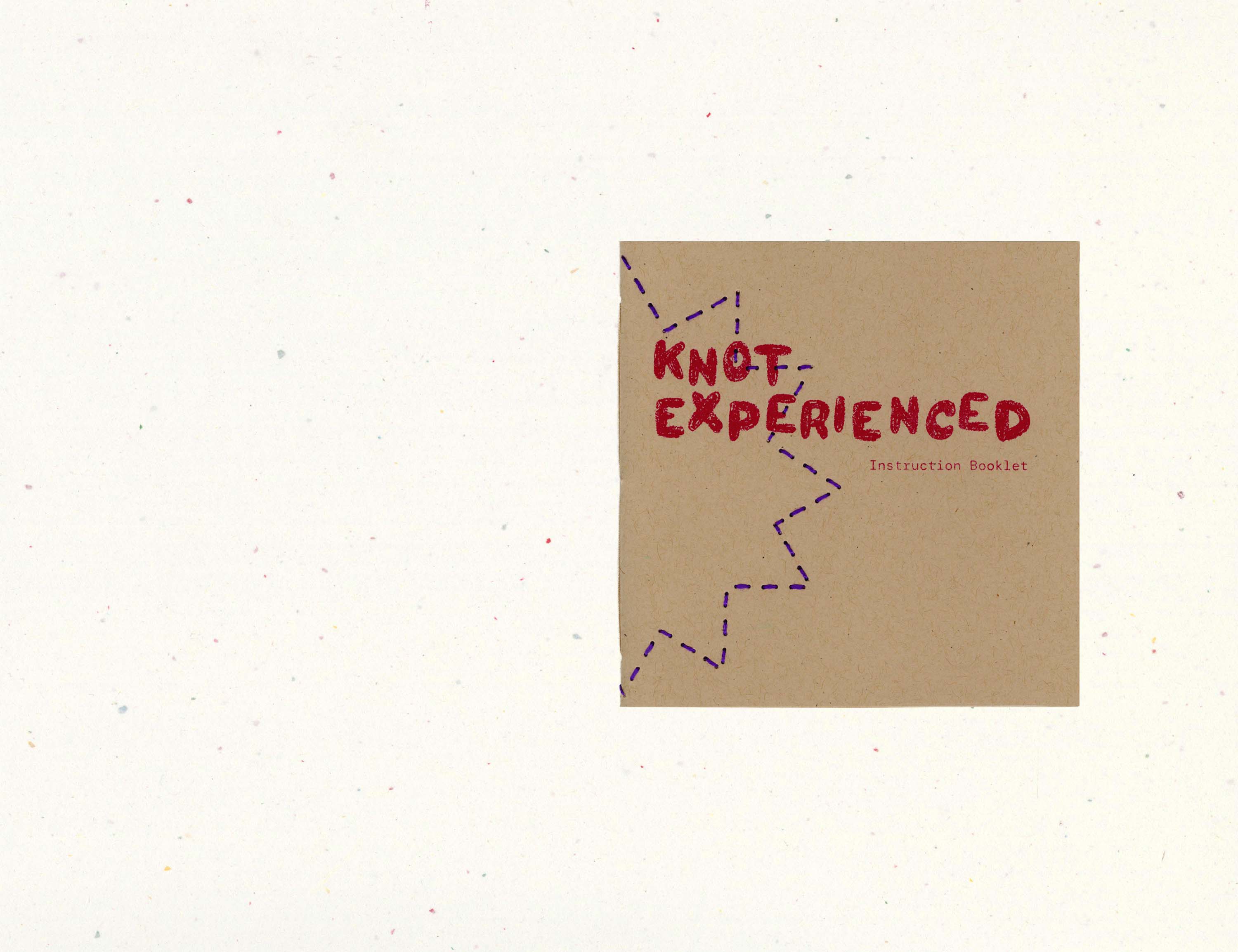



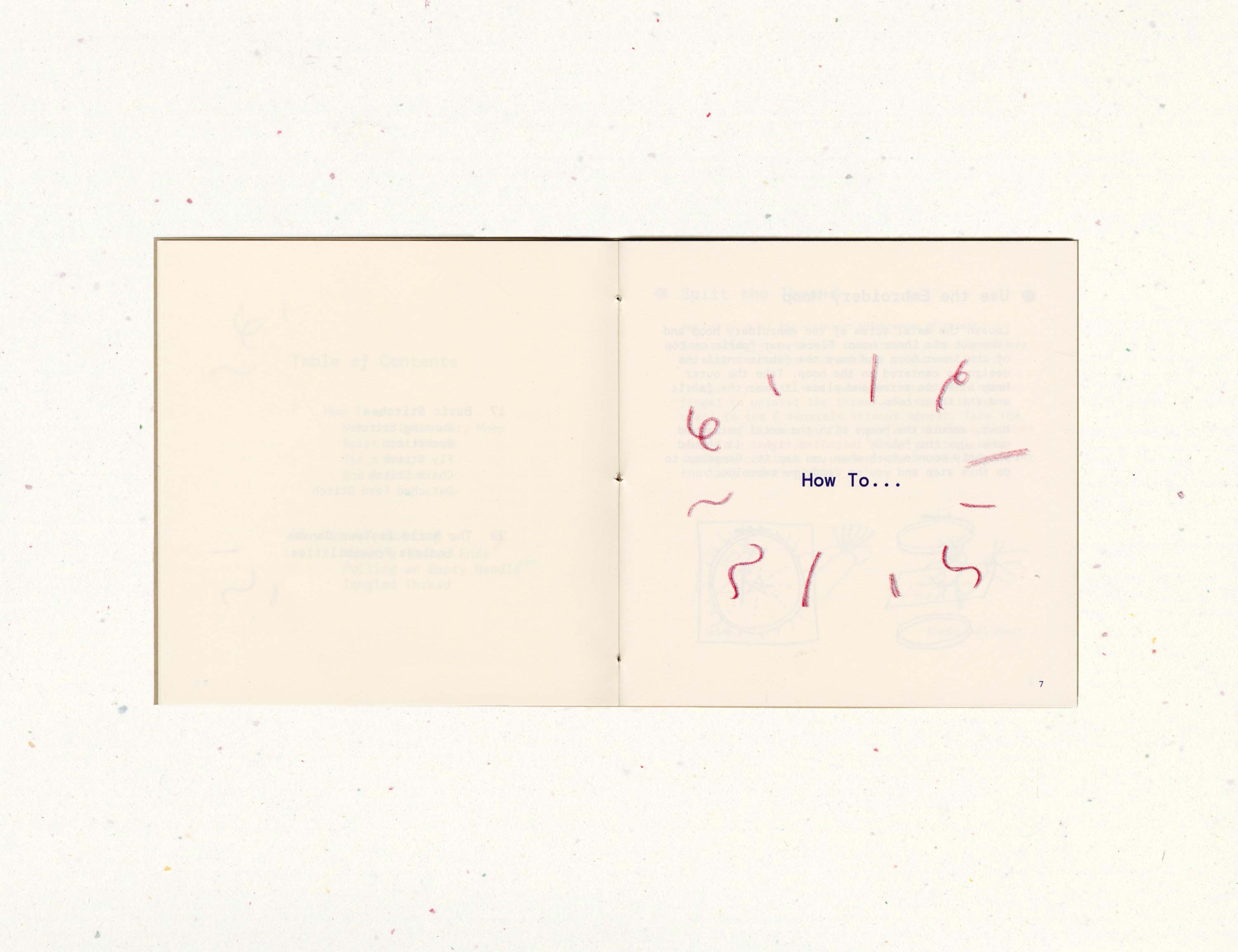
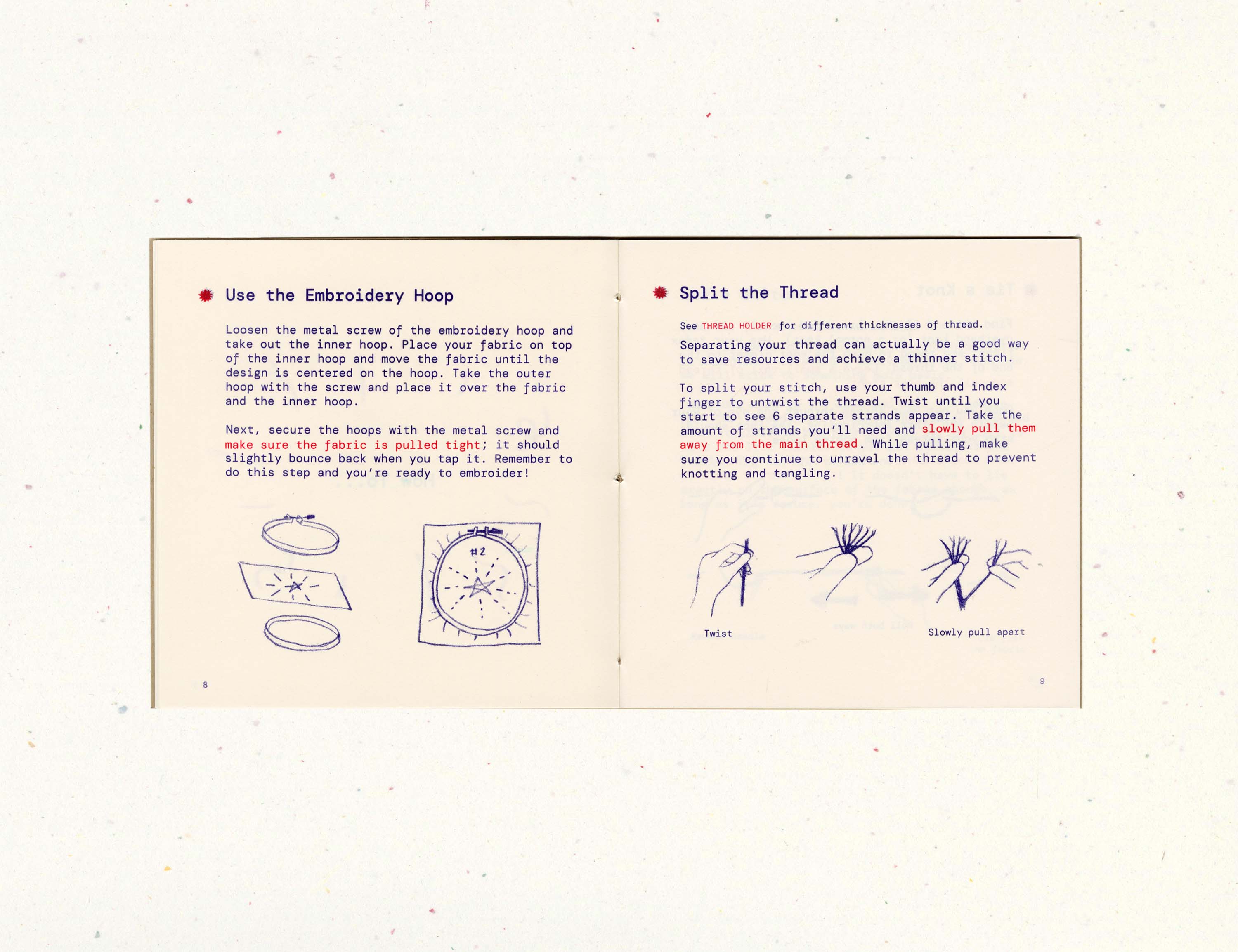

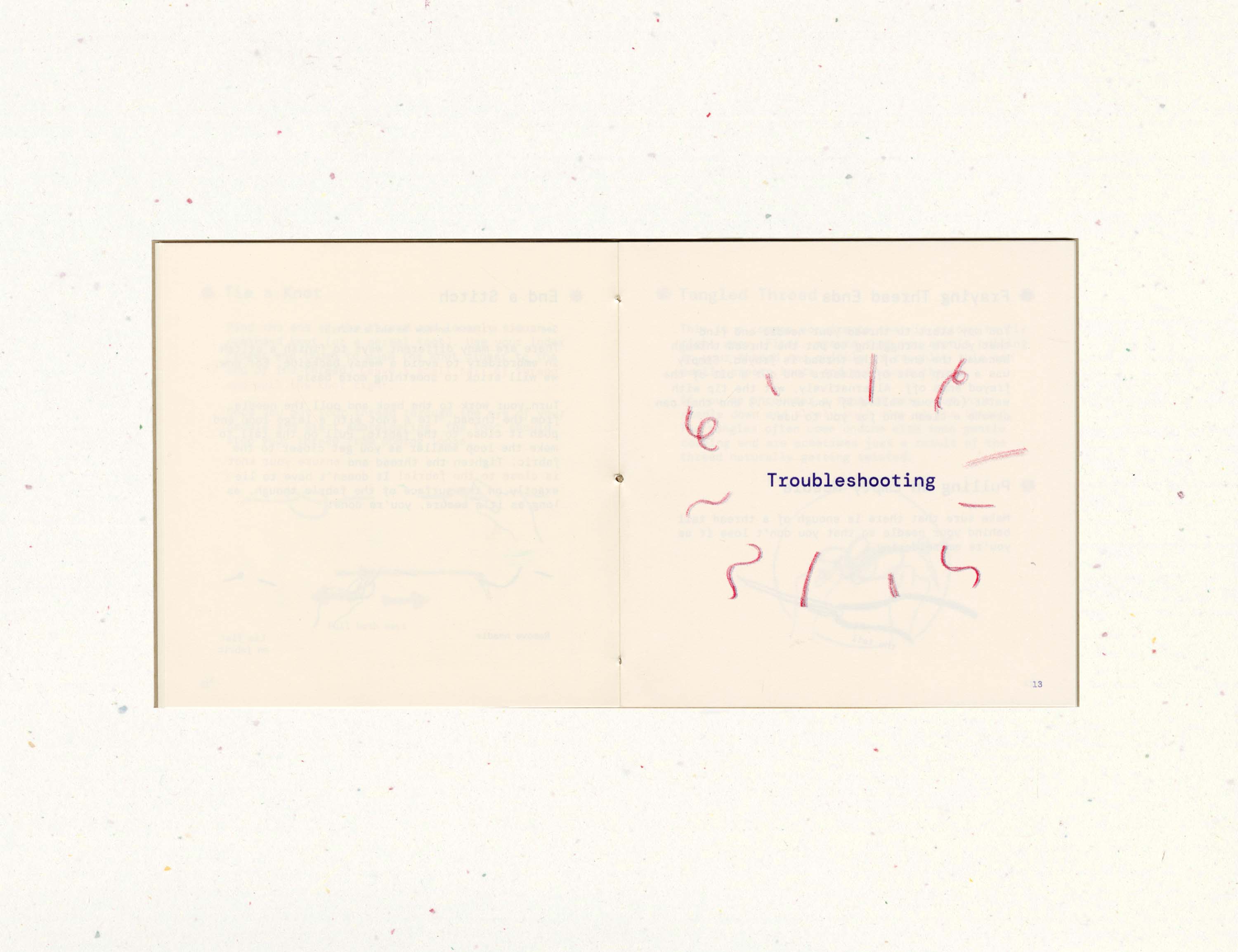
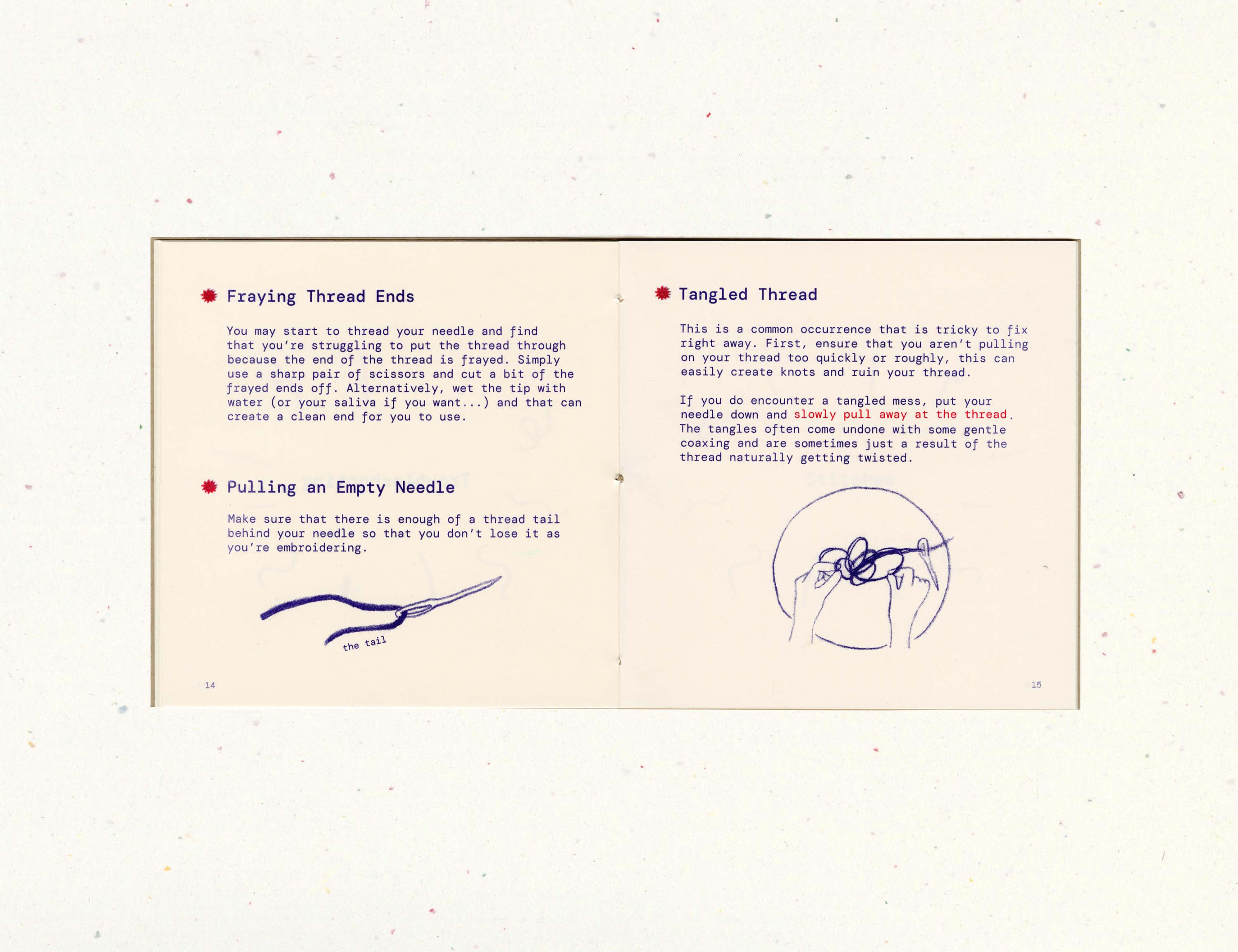
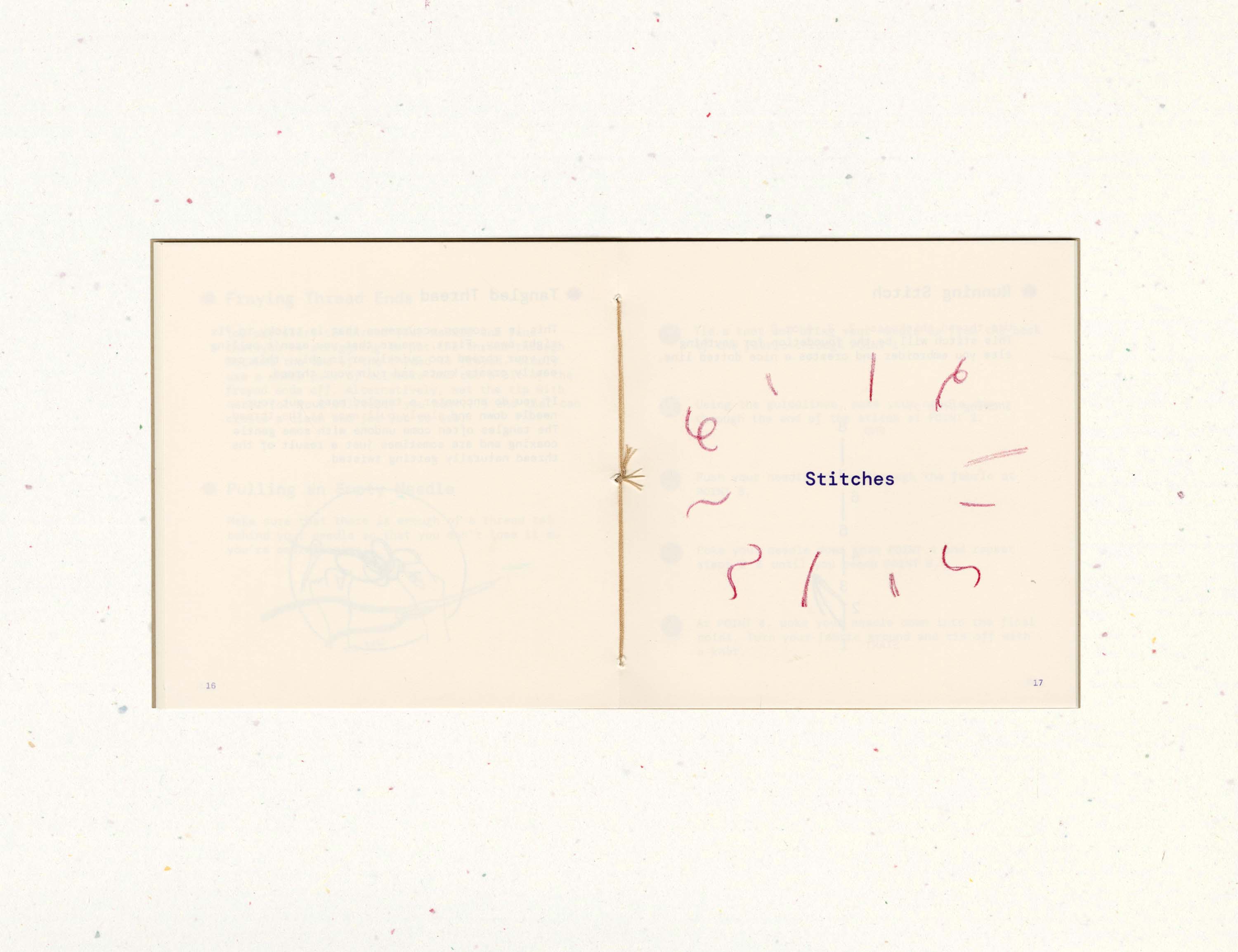
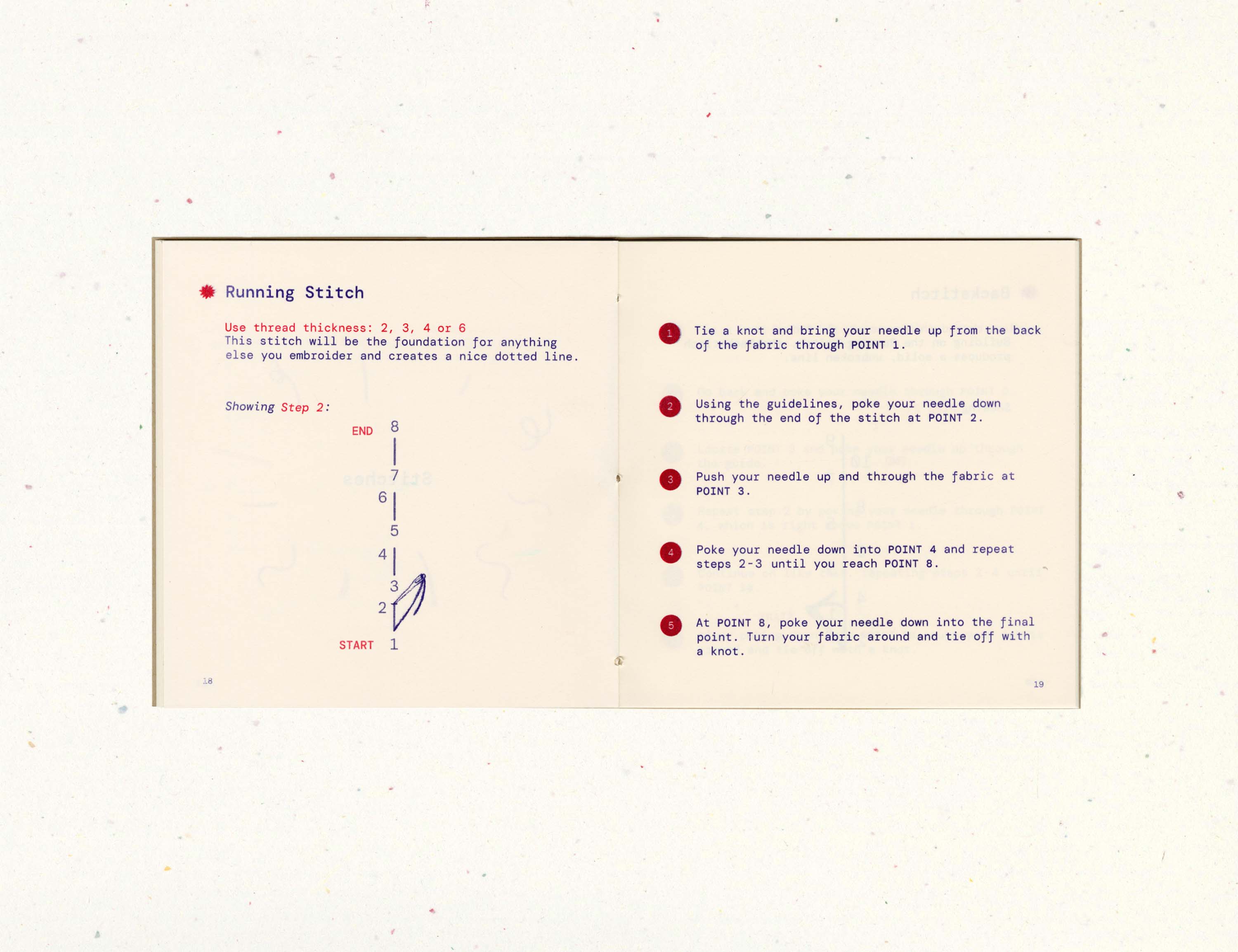


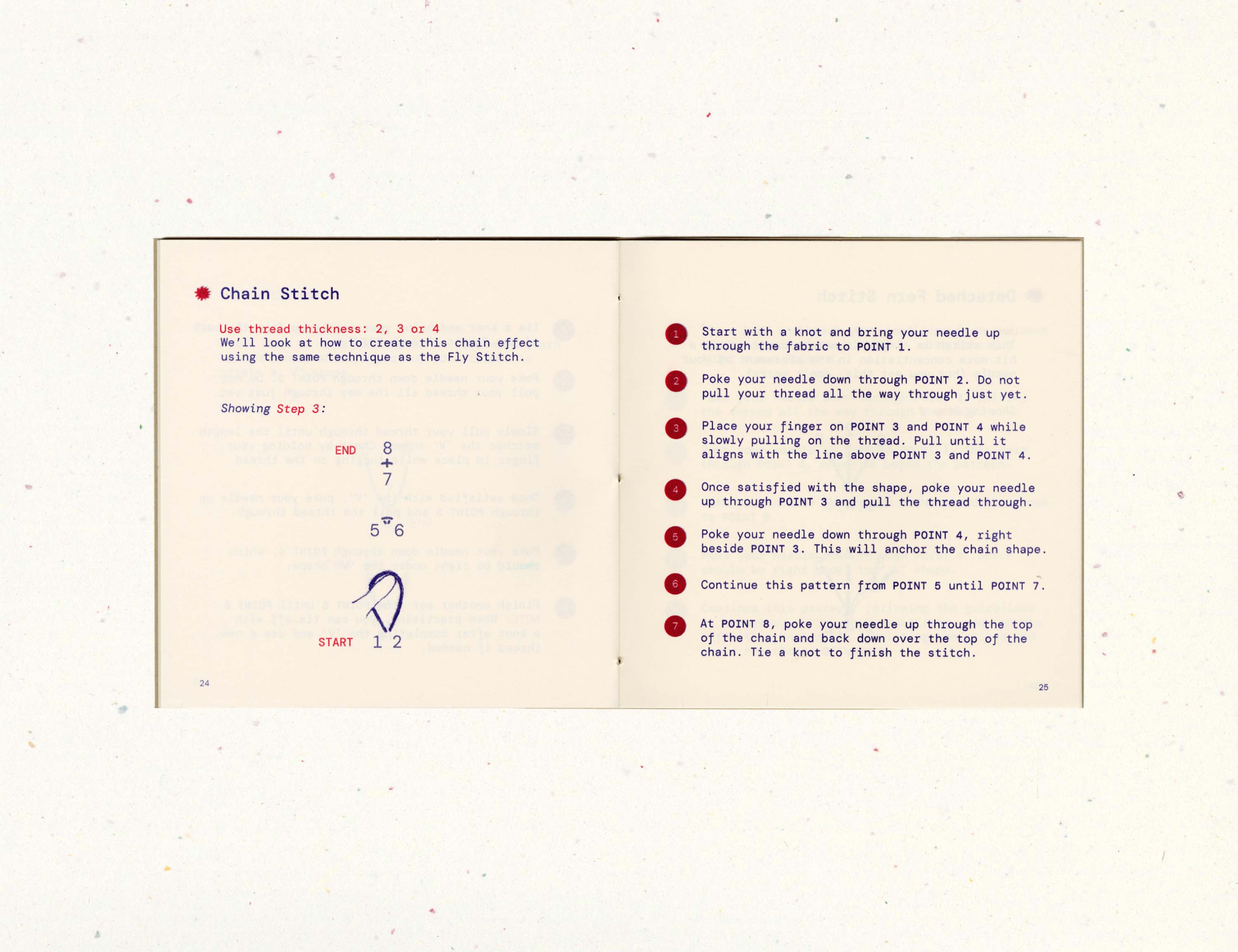





The Knot Experienced Instructions booklet.

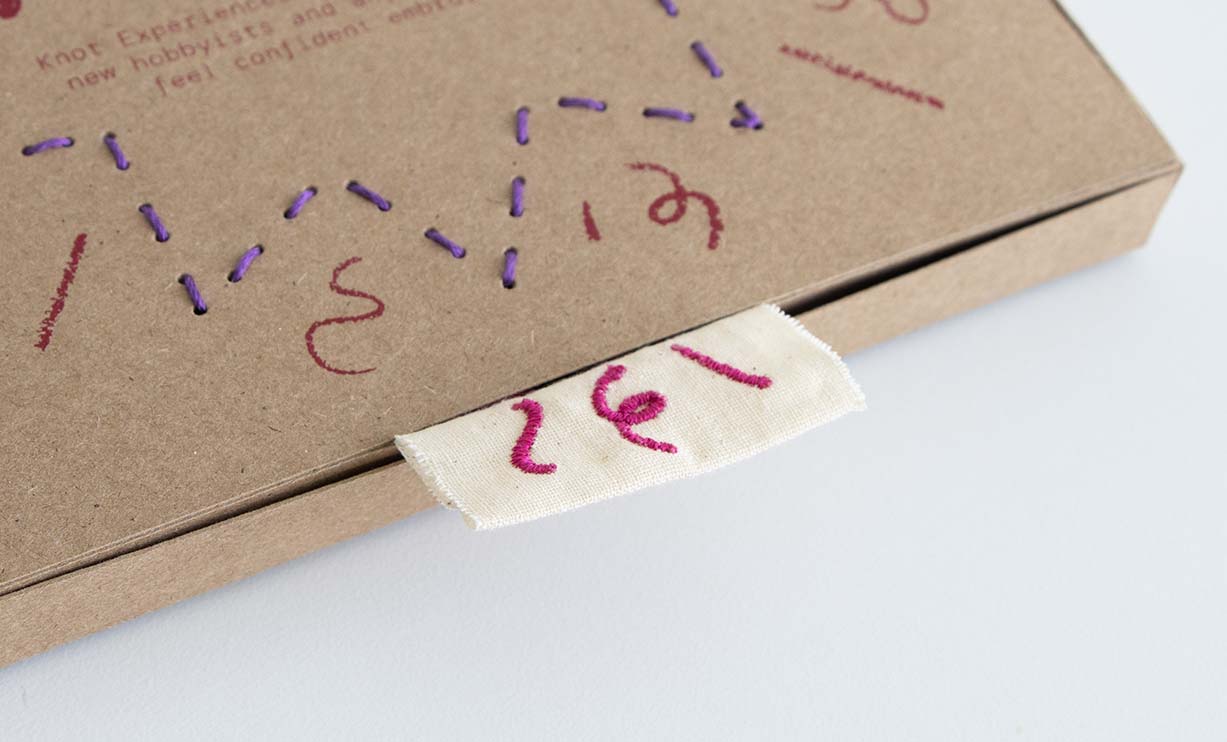












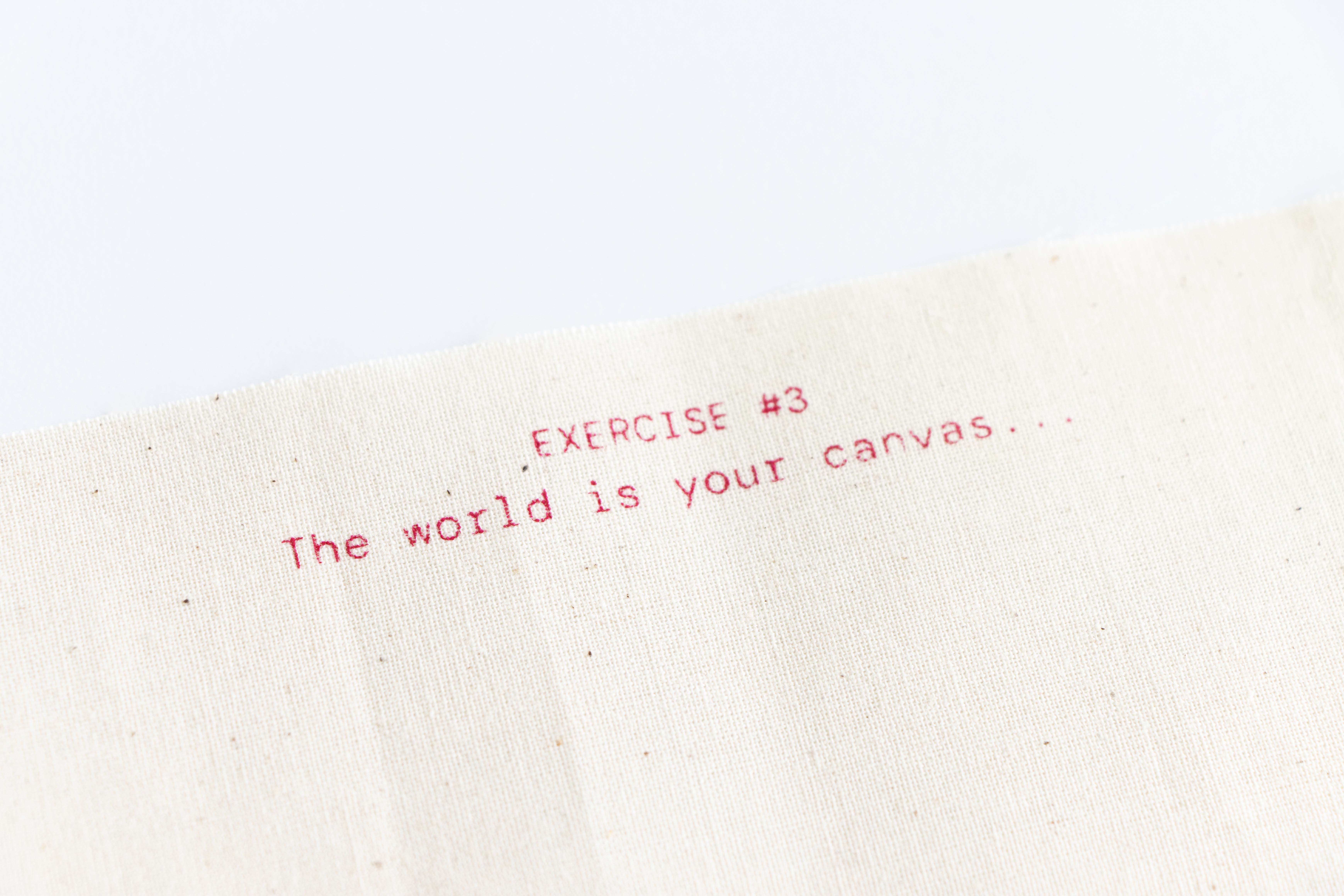









The nine embroidered pieces displayed at The Show, completed by various post-secondary students in Vancouver.
Credits to: Mandy “Mandie” Huynh, Lauren Klassen, Amanda Lim, Dayana Marden, Claire Ko, Rayna Lai, Jayde, Emma Teng, and Anne SueYeun Seol
Credits to: Mandy “Mandie” Huynh, Lauren Klassen, Amanda Lim, Dayana Marden, Claire Ko, Rayna Lai, Jayde, Emma Teng, and Anne SueYeun Seol
︎︎︎Acknowledgements
I want to extend my deepest gratitude to my peers and instructors for all their encouragement, feedback and conversations with me over the course of this project and year. This project would not have been possible without your support and help! Also a big thank you to The Writing Centre ECU, Student Wellness ECU and Esthette Lifestyle Shop for allowing me to test my crocheting workshops. I appreciated the resources and spaces you all provided for me to plan and host my workshops.
And, of course, the biggest thanks to my testers and participants who tried my kits at whatever stage it was in! This kit was shaped by your thoughtfulness and willingness to try new things. Thank you for your patience and belief in seeing my project through.